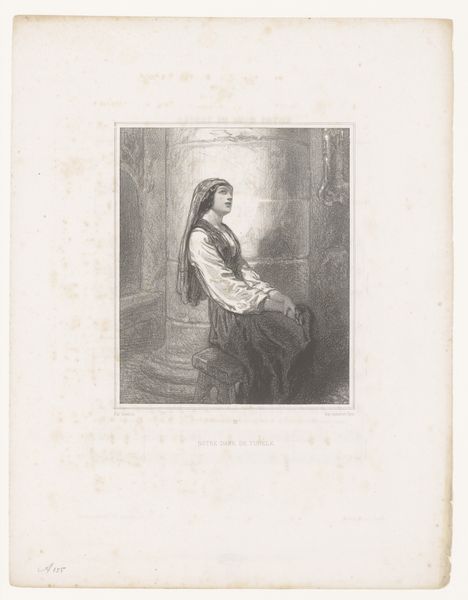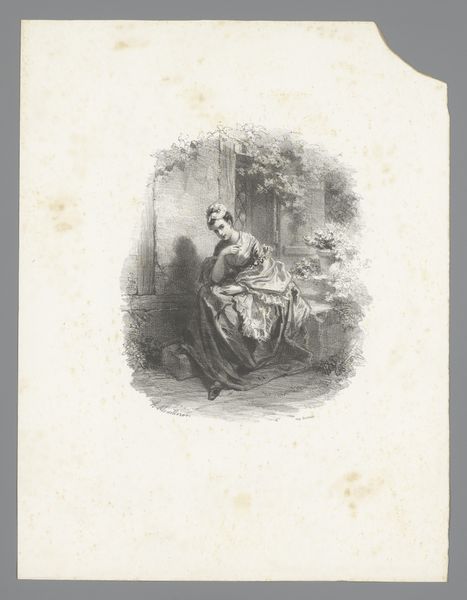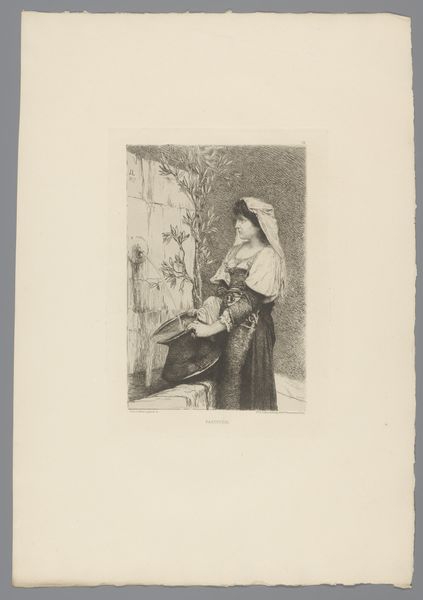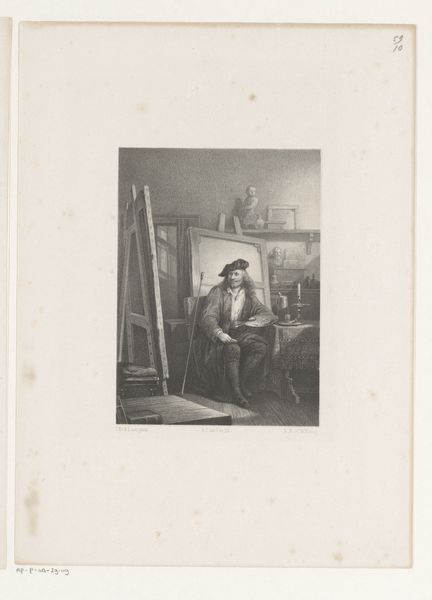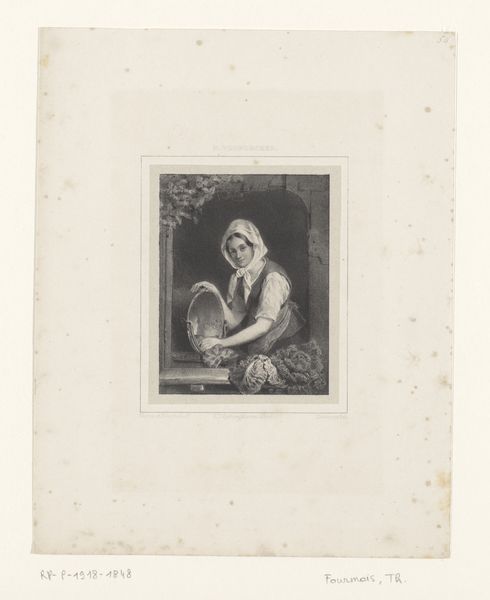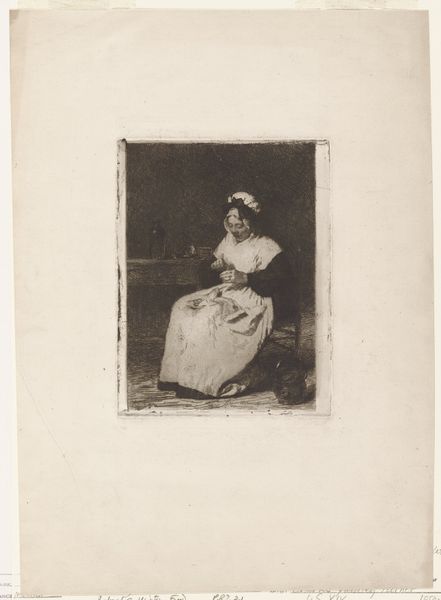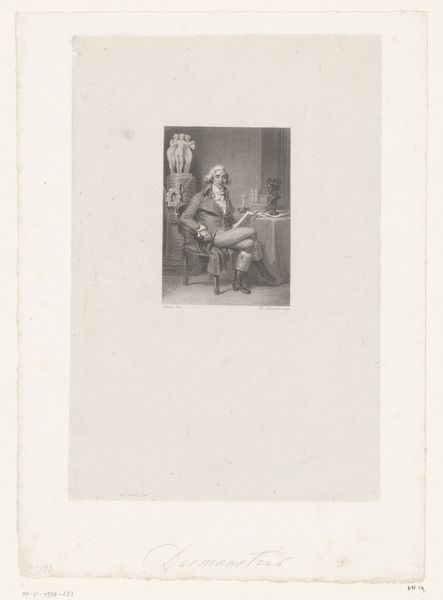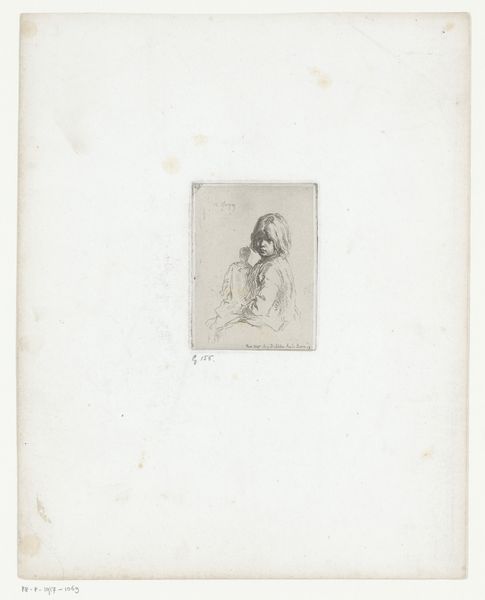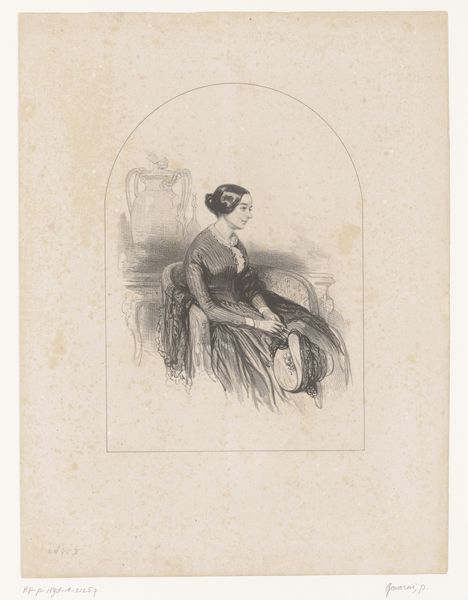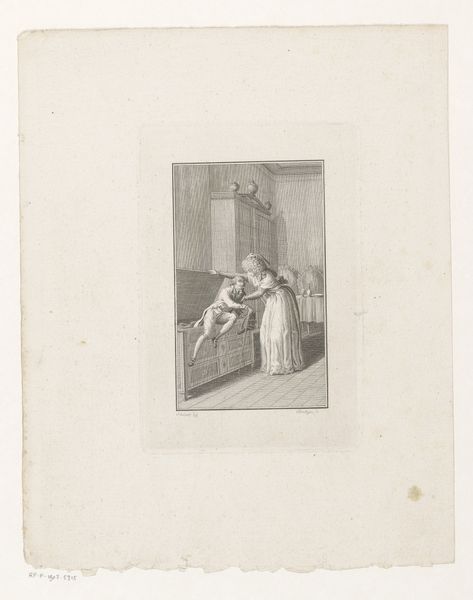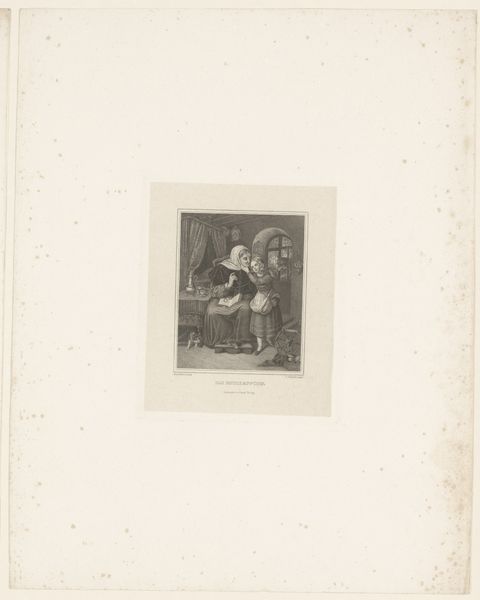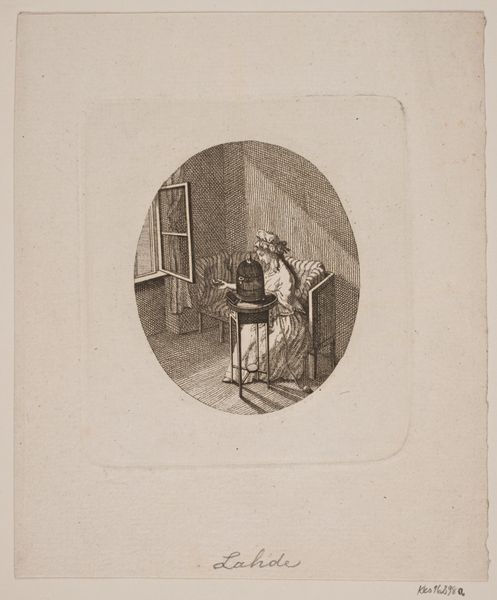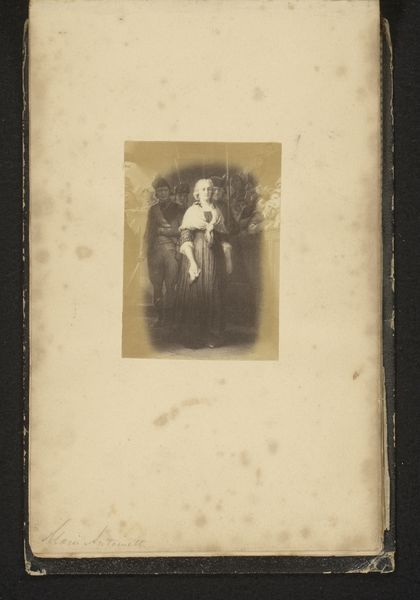
print, engraving
#
portrait
# print
#
romanticism
#
genre-painting
#
engraving
Dimensions: height 189 mm, width 128 mm
Copyright: Rijks Museum: Open Domain
Editor: We're looking at "Meisje zittend voor een huis, een mand met bloemen op haar schoot" by Josef Axmann, sometime between 1811 and 1873. It's an engraving, and I’m immediately struck by the serenity of the scene – a girl with flowers, a church steeple in the background… it feels very Romantic. What do you see in this piece? Curator: What I find most compelling is how this seemingly simple image carries so much symbolic weight from its time. Think of the flowers: beyond just beauty, what might they represent in terms of virtue, ephemerality, or even the social roles of women at that time? And then the steeple--what is the artist conveying with its inclusion? Editor: So, you’re saying the flowers aren't *just* flowers? Could they be hinting at something about innocence, or maybe the brevity of life? The steeple would imply a specific cultural framework. Curator: Exactly! And consider the setting itself. A young woman posed against the backdrop of both home and church evokes societal expectations. Note how this builds upon traditional iconography, even as it gently shapes a new, more intimate, image of womanhood. Does the image resonate with our collective memory? Editor: It makes me think about how much images from this period were intended to instruct, as well as inspire feelings. Like a subtle code! Curator: Precisely! These visual symbols tap into a shared understanding. The artist isn't just depicting a scene, they're engaging in a visual dialogue with their audience. They were inviting viewers into an established visual vocabulary. What did you learn? Editor: I never really considered how deeply embedded symbolism can be, even in everyday genre scenes. And the reminder about how societal values can become encoded into visual culture is so fascinating! Thank you!
Comments
No comments
Be the first to comment and join the conversation on the ultimate creative platform.
